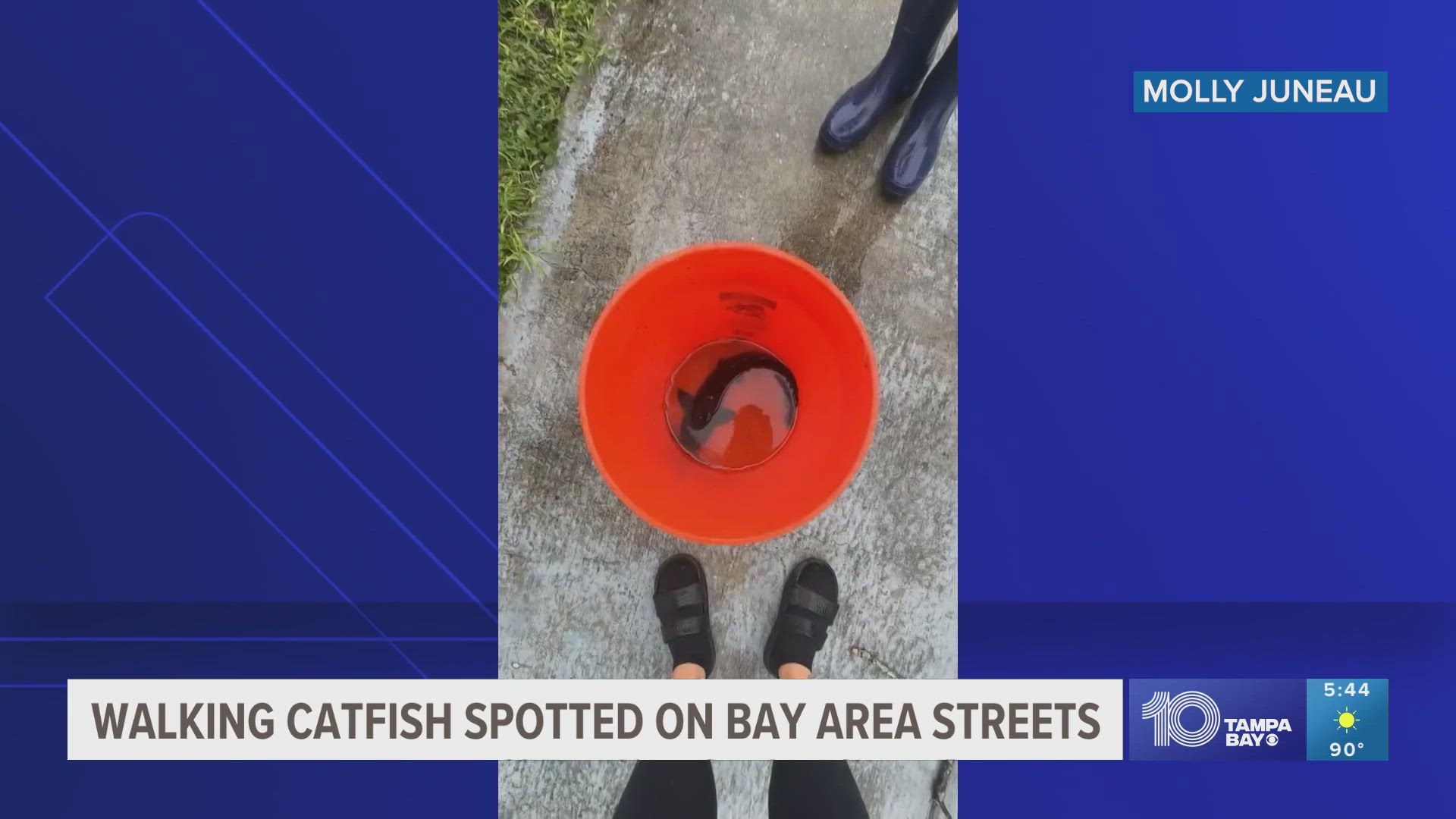ST. PETERSBURG, Fla. — Hurricane Debby, now a tropical storm, has washed up everything from $1 million worth of cocaine to something a little more slimy — walking catfish.
In a video captured by Dan Ciarletta of St. Petersburg on Sunday, Aug. 4, at least two of the nonnative species fish are in his driveway. They can be seen "walking" in very shallow water. As Debby passed the Tampa Bay area, it brought flash flooding and heavy rainfall to the region, aiding the fish in their journey to the St. Pete neighborhood.
Other residents in Pinellas County also posted videos to social media showing the "walking" fish.
"Very weird catfish, I guess, on our driveway during a tropical storm," Luis Bardach said in one video taken in Gulfport on Sunday, hours before Debby made landfall as a Category 1 hurricane. "Very much alive."
After another person in the video poked the fish, it was seen squirming away with not even an inch of water beneath it, or as the boys in the video said, "It's walking away."
But what are walking catfish and why are they in Florida if they're not native to the Sunshine State? Here's what you need to know.
What are walking catfish?
Mucus-covered, elongated and scaleless bodies with sharp pectoral spines and four pairs of barbels (those things that look like whiskers by their large mouth) — that's how the Florida Fish and Wildlife Conservation Commission and Florida Museum of Natural History describe walking catfish.
The name comes from their ability to make short, on-land journeys by pulling themselves along their pectoral fins, "much like an infantry-man scooting under barbed wire," the FWC said on its website.
The walking catfish also has the ability to breathe air and can survive on land so long as they stay moist.
Where did they come from?
Native to Southeast Asia, the first reports of walking catfish came in 1967 in the Everglades and canals in South Florida. A short time later, there were reported sitings in Hillsborough County. Since then, they can be found throughout the state.
The FWC says they generally prefer shallow and highly vegetated water bodies, such as ponds and lakes. While once thought to be a detriment to native fish populations, the FWC says that's not the case. They are opportunistic feeders, though, and will consume small fish, aquatic insects, plant material and detritus. They also can scavenge on dead fish.
Don't try to catch them
They're covered in a mucus-like substance, making walking catfish hard to handle. But more importantly, they're illegal to keep while alive. You need a special state and federal permit to possess or transport the fish, according to the FWC.

